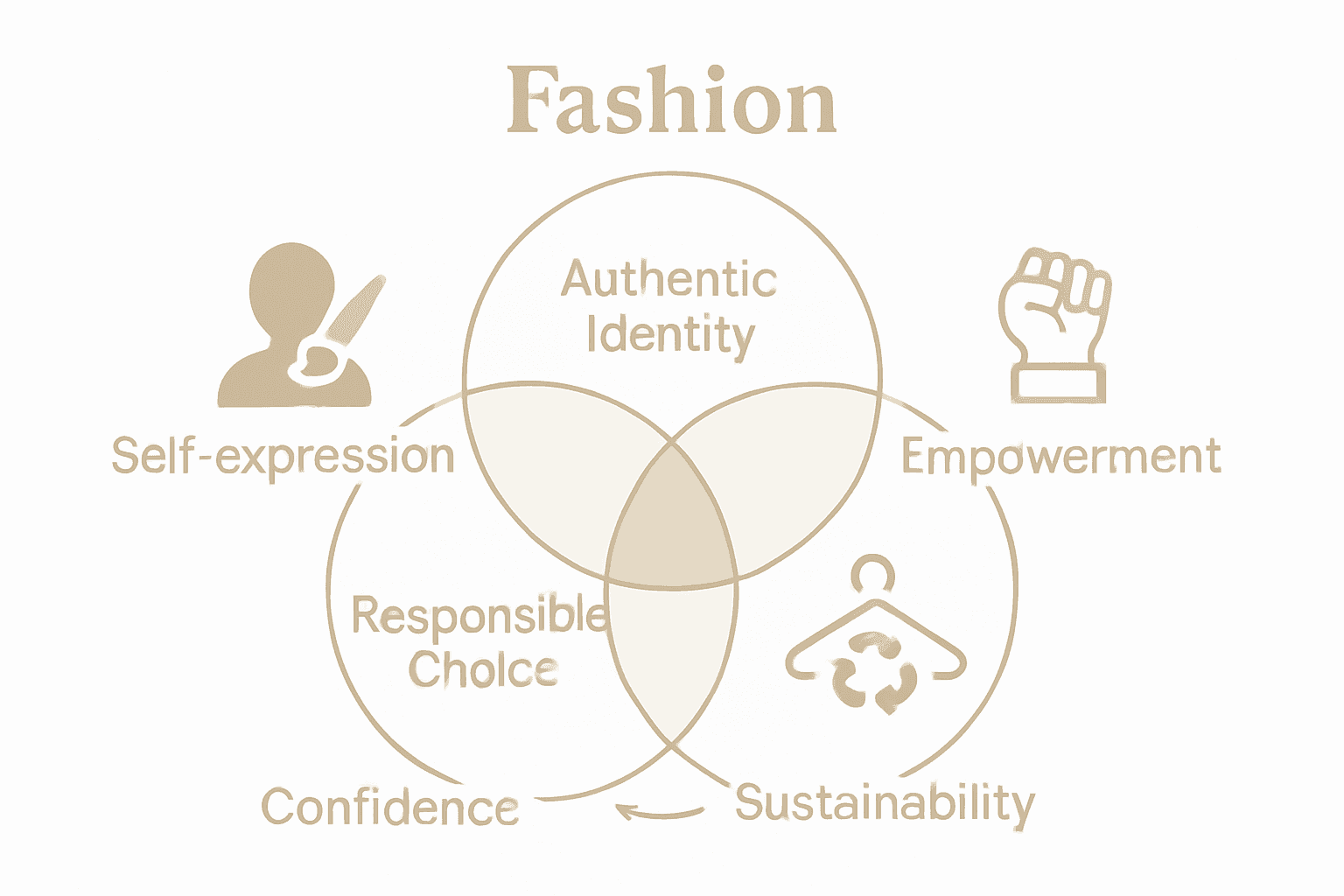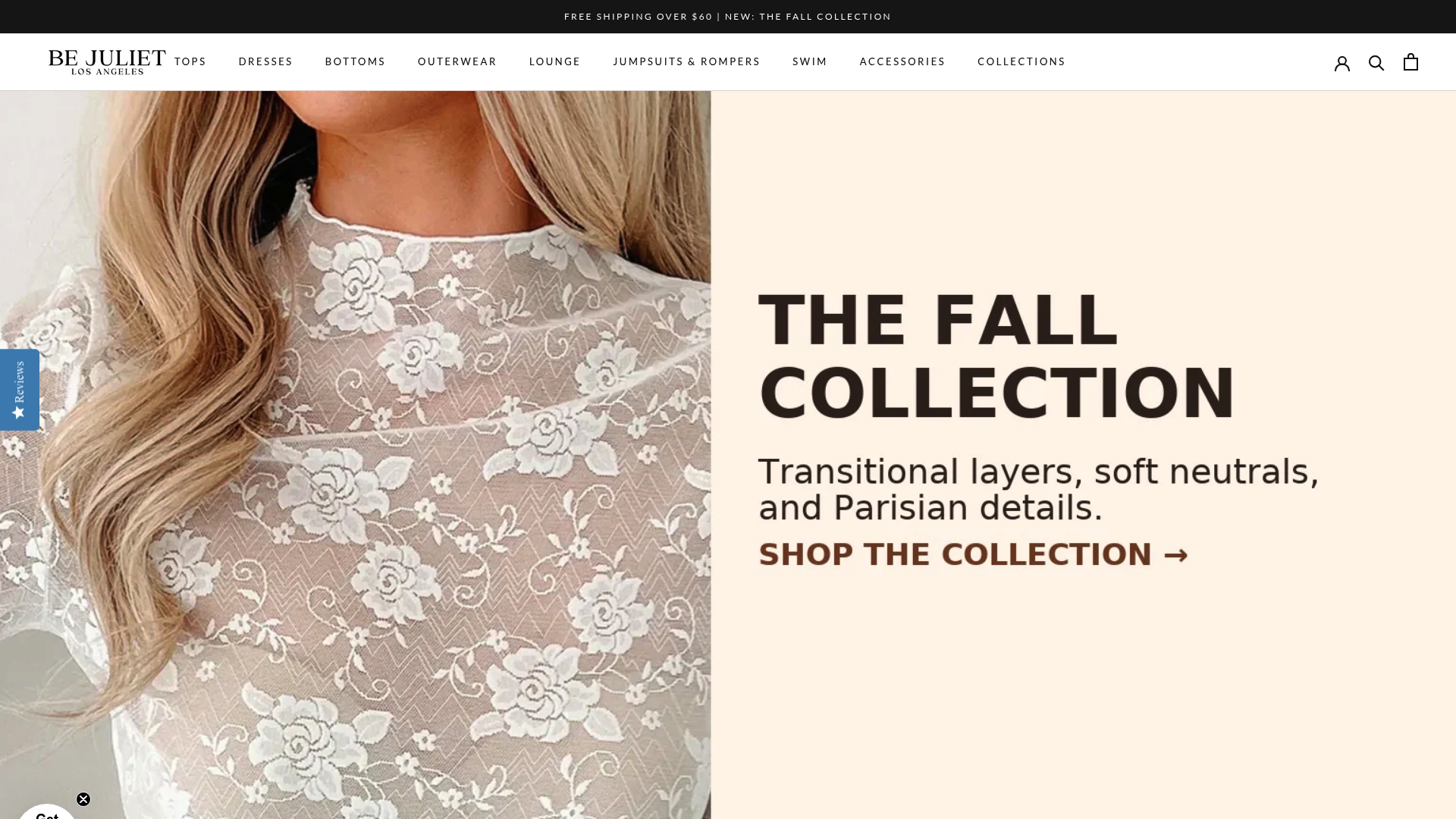Why Does Fashion Matter? The Essential Guide
Most advice about fashion misses its deeper purpose. Clothing is never just about what covers our bodies. Instead, it’s a powerful way to share our story, shape our confidence, and connect with others. Research shows our personal style acts as a silent language, revealing identity, values, and emotion every time we get dressed. This article unpacks the real meaning of fashion, why it matters, and how your choices can empower and inspire both yourself and those around you.
Table of Contents
- Defining Fashion’s True Meaning And Purpose
- Personal Style As Self-Expression And Storytelling
- Fashion’s Role In Culture And Modern Identity
- How Fashion Fuels Confidence And Empowerment
- Creativity, Innovation, And Conscious Fashion Choices
Key Takeaways
| Point | Details |
|---|---|
| Fashion as Self-Expression | Fashion serves as a profound medium for personal storytelling and cultural expression, reflecting our identities and values. |
| Dynamic Identity Formation | Personal style is a continuously evolving dialogue that allows individuals to showcase their multifaceted identities in a visually compelling manner. |
| Fashion and Empowerment | Clothing empowers individuals by allowing them to reclaim their narratives and communicate their authentic selves, fostering confidence through intentional choices. |
| Conscious Fashion Choices | Sustainable practices in fashion advocate for ethical production and challenge fast fashion, inviting individuals to align their wardrobe choices with their values for social and environmental responsibility. |
Defining Fashion’s True Meaning and Purpose
Fashion is far more than fabric draped on bodies — it’s a profound language of personal storytelling, cultural expression, and individual empowerment. At its core, fashion represents an intimate dialogue between who we are and how we choose to present ourselves to the world. When we select an outfit, we’re not just choosing clothing; we’re crafting a visual narrative that communicates our mood, values, and innermost sense of self.
Beyond mere aesthetics, fashion serves as a powerful medium of self-expression. Each garment becomes a carefully curated brushstroke in the complex portrait of our identity. Understanding how fashion tells stories reveals that our clothing choices are never random — they’re intentional communications about our personality, aspirations, and emotional landscape. A tailored blazer might signal professional ambition, while a flowing bohemian dress could represent a free spirit seeking creative liberation.

Fashion’s true purpose transcends trends and seasonal collections. It’s a dynamic form of personal artistry that allows individuals to experiment, reimagine, and continuously redefine themselves. Through thoughtful styling and clothing selection, we create visual poems that reflect our inner worlds — sometimes bold and declarative, other times soft and introspective. Understanding empowerment through fashion demonstrates how clothing can be a transformative tool for building confidence and expressing complex, multifaceted identities.
Ultimately, fashion matters because it is a universal language that connects us. It bridges cultural divides, represents personal journeys, and provides a canvas for creativity. Whether you’re wearing a vintage piece passed down through generations or a contemporary design that speaks to your current state of mind, what you wear is never just about appearance — it’s about connection, storytelling, and the beautiful, complex art of being human.
Personal Style as Self-Expression and Storytelling
Personal style is an intimate form of non-verbal communication that transcends mere clothing choices. According to University of East London, fashion culture enables individuals to express their identity and values through a unique, personal language of style. Each outfit becomes a carefully curated narrative, revealing layers of our personality, cultural background, and emotional landscape.
The semiotics of fashion provides a fascinating lens for understanding this profound communication. What is Personal Style reveals how every garment selection is an intentional sign system. As research from Wikipedia explains, clothing serves as a complex system of signs that convey social and cultural positions. A vintage leather jacket might signal rebellion, while a meticulously tailored suit could communicate professional ambition and respect for traditional structures.
Our personal style is a dynamic, evolving form of self-portraiture. It reflects not just who we are, but who we aspire to be. Some days, we might choose bold, vibrant colors that showcase our confidence and creativity. On other days, soft, muted tones might reflect a need for introspection or calm. This constant dialogue between our inner world and external presentation allows us to experiment, reimagine, and continuously redefine our identity.
Ultimately, personal style is about authenticity and empowerment. It’s a powerful tool for self-discovery, allowing us to communicate our unique story without uttering a single word. Whether your style is minimalist and sleek or eclectic and adventurous, what matters most is that it genuinely represents you — a visual poem of your most authentic self.
Fashion’s Role in Culture and Modern Identity
Fashion is far more than a superficial display of clothing — it’s a powerful cultural language that reflects and shapes our collective identity. Understanding the Influence of Music on Fashion reveals how deeply intertwined fashion is with broader cultural movements. Each era’s fashion serves as a visual archive, capturing the social dynamics, political landscapes, and collective emotional experiences of its time.
In the contemporary landscape, fashion has become a dynamic tool for personal and collective identity formation. It provides a platform for marginalized communities to reclaim narratives, challenge societal norms, and express complex cultural experiences. From streetwear that emerged from urban youth cultures to traditional garments reimagined as statements of cultural pride, clothing becomes a form of resistance, celebration, and storytelling.
Modern identity is increasingly fluid and multifaceted, and fashion reflects this complexity. Fashion Through the Decades demonstrates how style has been a continual dialogue between individual expression and broader social movements. Gender boundaries blur, cultural exchanges accelerate, and personal style becomes a nuanced expression of intersectional identities — reflecting not just who we are, but the multiple worlds we navigate.
Ultimately, fashion is a profound act of cultural communication. It transcends aesthetic choices, becoming a powerful medium through which individuals and communities articulate their values, struggles, hopes, and dreams. In a world of rapid global connections, what we wear tells a story far deeper than fabric and thread — it speaks to our shared human experience of belonging, transformation, and collective imagination.
How Fashion Fuels Confidence and Empowerment
Confidence is not something you wear — it’s something you cultivate, and fashion becomes a powerful catalyst in this transformative journey. According to All Study Journal, fashion’s cyclical nature provides individuals unique opportunities for self-expression, allowing them to communicate identity and heritage while simultaneously building inner strength. The right outfit can be a suit of armor, a canvas of personal narrative, a statement of resilience.
Fashion activism takes this empowerment to another level. As Wikipedia explains, clothing becomes a medium for social and political change, enabling individuals to express their deepest values and challenge existing societal structures. Fashion and Mental Health reveals how personal style can be a profound psychological tool — transforming not just external appearance, but internal perception.
The connection between clothing and confidence runs deeper than aesthetic appeal. When we choose pieces that resonate with our authentic selves, we’re making a declaration. A bold blazer might signal professional ambition, while a flowing dress could represent creative freedom. These aren’t just garments — they’re visual manifestos of our inner landscape, inviting the world to see us as we truly are.
Ultimately, fashion empowerment is about reclaiming narrative. It’s understanding that what we wear is a form of self-love, a daily ritual of honoring our complexity, our journey, and our potential. In a world that often tries to define us, fashion becomes our personal rebellion — a way to say, ‘This is me, unapologetically and beautifully.’
Creativity, Innovation, and Conscious Fashion Choices
Creativity in fashion is no longer just about aesthetic appeal — it’s a powerful vehicle for social and environmental transformation. According to UAL Research Online, sustainable fashion practices emphasize a profound relationship between time, meaning creation, and innovative design approaches that consider deeper environmental and social impacts.
Conscious fashion represents a revolutionary reimagining of the industry’s potential. Understanding What is Conscious Fashion reveals how design can be a form of activism, transforming clothing from mere consumption to a deliberate act of ethical expression. As Wikipedia explains, sustainable fashion addresses the complex environmental and social impacts of clothing production, promoting choices that balance aesthetic preferences with moral considerations.
Innovation in fashion now means thinking beyond trends — it’s about creating pieces that tell stories, challenge systems, and respect both human and ecological ecosystems. Designers are becoming architects of change, developing materials from recycled ocean plastics, creating zero-waste patterns, and reimagining production processes to minimize environmental footprint. Each garment becomes a statement, a small rebellion against fast fashion’s destructive cycles.
Ultimately, conscious fashion choices are an invitation to participate in a larger narrative of global responsibility. They represent a personal commitment to creativity that extends beyond personal style — a way of saying that what we wear can reflect our deepest values, our hope for a more equitable world, and our belief in fashion’s power to create meaningful change.

Embrace Fashion That Speaks Your Truth and Empowers Every Moment
Fashion is not just about what you wear. It is about expressing your authentic self, telling your story, and fueling your confidence with every choice. If you have ever struggled to find clothes that resonate with your mood, values, and identity, you are not alone. The challenge is to discover pieces that balance comfort, empowerment, and personal style — garments that make you feel genuinely seen and celebrated.
At Be Juliet, we understand this deep connection between fashion and self-expression. Dive into our curated collections like Women’s Outerwear for bold statements or refined elegance or explore the soothing ease of our Sweaters & Sweatshirts that honor your laid-back, authentic moments.

Start your journey of style and self-love today at Be Juliet. Embrace fashion that does more than cover — fashion that tells your story and empowers you to live fully in your truth now.
Frequently Asked Questions
What is the true meaning of fashion?
Fashion represents a profound language of personal storytelling, cultural expression, and individual empowerment, communicating our mood, values, and sense of self.
How does personal style serve as a form of self-expression?
Personal style allows individuals to express their identity and values through their clothing choices, creating a narrative that reflects their personality and emotional landscape.
In what ways can fashion empower individuals?
Fashion can empower individuals by enabling them to reclaim narratives, build confidence through self-expression, and challenge societal norms, making clothing a powerful medium for personal and social change.
What role does sustainable fashion play in today’s society?
Sustainable fashion emphasizes conscious consumption and ethical design practices, promoting creativity and social responsibility while addressing the environmental and social impacts of clothing production.
Recommended
- Understanding Current Fashion Trends 2025: A Deep Dive – Be Juliet
- Understanding the Difference Between Fashion and Style – Be Juliet
- Understanding Empowerment Through Fashion: A Woman’s Guide – Be Juliet
- What is Sustainable Fashion? Understanding Its Impact – Be Juliet
- What are Bestsellers in Fashion? Understanding Their Appeal
